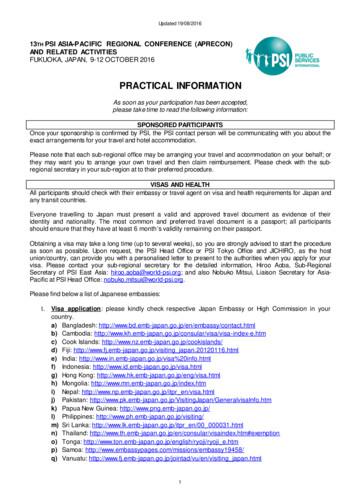Asia World’s 1 Civilization Mesopotamia
AsiaWorld’s 1st CivilizationMesopotamiaPresent Day Iraq(The Fertile Crescent)
Mesopotamia
Mesopotamian n n Mesopotamia means: “land between tworivers”Civilization developed between theEuphrates and the Tigris RiversBy 3000 B.C. a number of cities areestablished by the Sumerians
Role of the Environmentn Rivers supplied basics for survivaln n n FoodWaterSanitation
Role of the Environmentn Problems with living near a river valley?n n Destroyed by frequent floods.Communication amongst the various isolatedcities was very difficultHow did they solve these problems?
6
City-StatesEach city-state had its own written code of law,assembly of citizens, king, and chief god.n n n n n Sumer( Main Region)UrUrukKishBabylon
Invention of Writingn Result was the development ofcuneiform:n n “wedge-shaped”pictographic system
Cuneiform
Sumerian Societyn Sumer was different from all other earliercivilizationsn n n n n n n Advanced citiesSpecialized workersComplex institutionsRecord keepingAdvanced technologyDeveloped city-statesFood surplus increased population expandedtrade expansion of Sumerian society
Sumerian Societyn n n PolytheisticWrote myths (Epic of Gilgamesh)Had social classesn n n n Priests and kings were at the topSlaves were at the bottomWomen probably couldn’t attend school but hadmany other rightsAdvances in mathematicsn Number system based on 60 (60 seconds 1 minute)
Sumerian SocietyZigguratsServed as religious temples
Sumerian Inventionsn n WheelPotter’s wheel (shapecontainers)n Leveesn Irrigationn Number systemn 12 month calendarn Metal plown Sailn n Some of the earliest knownmapsNew architecture
Conquering of Sumern n The Sumerian city-states eventually fellto foreign invaders (2000s BC)The Akkadians:n n Sargon I (2300-2200 BC) unites allMesopotamian cities (creates first empire)Under Sargon IAkkadians adopted Sumerian religionn Akkadians adopted Sumerian farmingn
Babylonian Empiren n n n n n Amorites (2000-1600 BC)Located in modern day SyriaConquered many parts of old Sumeria(including Babylon)Hammurabi--created a law code with harshpunishmentsBorrowed heavily from Sumerian cultureAfter Hammurabi’s death Babylon declined
Hittitesn n n n n n Began to conquer AsiaMinor (2000 BC)A strong army with chariotsConquered Amorites in1595 BC)Borrowed fromMesopotamian andEgyptian cultureHad a law code less harshthan Hammurabi’sLasted until about 1200 BC
Assyriansn n n n n Started to gainstrength about 900BCPowerful armyTreated conqueredpeople cruellyLarge empire withgood roadsCollapsed about612 BC
n n n ChaldeansDefeated the Assyrains inabout 612 BCDescended from Hammarabi’sBabyloniansAt its height during the rule ofNebuchadnezzar (605-562BC)n n n Spent a lot of money onBabylonBuilt Hanging GardensEmpire collapsed in 539 BCafter being defeated by thePersians
Gods/Goddessesn n n n n n n Anu- Main GodKi- Goddess of the earthEnki- God of WaterEnlil - Lord of the windNanna- Moon GodUtu- SunGod Inanna (Ishtar) - she was thegoddess of love and war.19
Mesopotamia ! Mesopotamia means: “land between two rivers” ! Civilization developed between the Euphrates and the Tigris Rivers ! By 3000 B.C. a number of cities are . Complex institutions ! Record keeping ! Advanced technology ! Developed cit
DISCOURSE ON COLONIALISM . by Aime Cesaire . A civilization that proves incapable of solving the problems it creates is a decadent civilization. A civilization that chooses . to . close its eyes to its most crucial problems is a stricken civilization. A civilization that uses its principles for trickery and deceit is a dying civilization.
The Indus Valley Civilization Civilization began in India around 2500 B.C., about 1000 years after the start of civilization in Sumer. The first Indian civilization arose on the northern plain in the valley of the Indus River. Historians call that civilization the Indus Valley, civilization.
only for culture, while civilization uses the term tahdhib. The word civilization is often associated with culture, even many western writers identify the "culture" and "civilization" of Islam. Often times Islamic civilization is associated with Arab civilization, although actually between Arabic and Islam can still be distinguished.
Civilization The Great War of the 21st Century Richard Hobbs Republican Men’s Club 20 October 2015 20Oct#2015 RMC#Islam#vs#Civilization 1. 20Oct#2015 RMC#Islam#vs#Civilization 2 Special 20 Handling and Tax included. 20Oct#2015 RMC#Islam#vs#Civilization 3. 20Oct#2015 RMC#Islam#vs#
1.Culture is by definition smaller than a civilization. 2.Culture can grow and exist without residing in a formal civilization whereas a civilization will never grow and exist without the element of culture. 3.Culture can be tangible or intangible whereas civilization is something that is more tangible because it is what you see as a whole
civilization and culture. Before any discussion on clash of civilizations, it is important to understand the essential features of western civilization. Many American and European universities have (at least they used to have till a few years ago) courses on Western civilization. Most of these courses state that Western civilization has
Updated 19/08/2016 3 South East Asia: Ian Mariano, Sub-Regional Secretary for South East Asia at: ian.mariano@world-psi.org South Asia: Kannan Ramana, Sub-Regional Secretary for South Asia at: kannan.raman@world-psi.org East Asia: Hiroo Aoba, Sub-Regional Secretary for East Asia at: hiroo.aoba@world-psi.org Oceania: Michael Whaites, Sub-Regional Secretary for Oceania at: michael.whaites@world .
Central Asia (pg. 454-458). Complete the chart provided. Physical Geography of Central Asia Landforms Water Systems Climate, Biomes, and Resources What are the major landforms of Central Asia? What water features are important to the people of Central Asia? How does the climate affect human activity in Central Asia? How do the landforms of Central






















